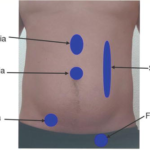NCLEX Practice Question on Gastric Mucosal Protective Agents … [Read more...] about NCLEX Question on Gastric Mucosal Protective Agents
NCLEX-RN Question on Assessing a Client with a Herniated Abdomen
NCLEX Practice Quiz: Managing a Client with a Herniated Abdomen … [Read more...] about NCLEX-RN Question on Assessing a Client with a Herniated Abdomen
NCLEX Quiz: Cushing Syndrome Patient’s Increased Risk – What Is It?
NCLEX Quiz: Cushing Syndrome Patient's Increased Risk - What Is It? … [Read more...] about NCLEX Quiz: Cushing Syndrome Patient’s Increased Risk – What Is It?
NCLEX Next Gen: Developmental Milestones Assessment for a 2-Year-Old
NCLEX Next Gen Quiz: Developmental Milestones Assessment for a 2-Year-Old … [Read more...] about NCLEX Next Gen: Developmental Milestones Assessment for a 2-Year-Old
Emergency Nursing: Next Gen NCLEX Practice Questions
Emergency Nursing & Triage: Next Gen NCLEX Practice Questions … [Read more...] about Emergency Nursing: Next Gen NCLEX Practice Questions




